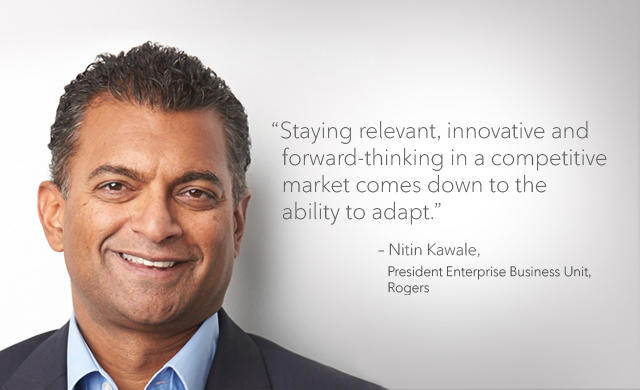Out of all of the building blocks to creating an innovative and productive workplace, perhaps the most transformative is processes. In previous articles, I’ve touched on other elements, but process is a piece to this puzzle that can make a tremendous difference to a company’s success and viability. Business process change isn’t about making a tweak here or there to keep your company on course. It’s about taking business processes, deconstructing them, and reconstructing them with an eye on technology. For example, making the shift to cloud computing. It’s a simple concept but it’s not just about technology. This is also about having the management courage to make a shift.
It’s no secret that companies that don’t evolve simply won’t survive in this rapidly changing world. In fact, a recent study projects that half of S&P 500 companies are expected to be replaced over the next decade. One of the biggest problems is that day-to-day decisions can get in the way of change.
It all comes back to process. Companies that have thrown away the playbooks and rebuilt processes from the ground up are not only changing the way they work, but the way entire industries work. We’ve seen it recently in industries where companies are practicing “disintermediation”, which means they are removing a layer between the producer and end consumer of a product. Obvious examples are Uber and Air BnB – they have transformed the transportation and hospitality industries in a matter of a few years. FinTech – Financial Technology – companies have our big banks rethinking how they engage customers. Sonnet Insurance recently made applying for and dealing with insurance an online experience, removing traditional frustrations for applicants.
An example that is close to home for me of a technology that’s helping to rebuild processes is IoT. The Internet of Things is more than a gimmicky technology, it’s now a fundamental change in how businesses operate across industries.
A good example of this is a company in the food industry that operated using very traditional business processes. To ensure their kitchens were compliant with food safety regulations, employees manually checked food temperatures using the clipboard, pen and paper method several times a day. For employees tasked with this very important job, the tedious process took up hours every work week. The information recorded was critical to the restaurant’s operation: failure to comply with food storage regulation could result in penalty or even business closure; yet, because of the method they were using to track their information, there was always an additional risk of human error.
This company understood that even though this method worked reasonably well and had been used for years, they could improve accuracy, free up employee time to devote to more business-focused tasks, and quickly and easily identify any temperature changes if they reinvented their process. So, they threw out their clipboards and turned to technology.
“It all comes back to process.” – Nitin Kawale
Today, this large restaurant chain operates a fully connected kitchen. They use IoT monitoring solutions to ensure that all food products stay within appropriate temperature thresholds. Better still, management is proactively alerted if thresholds are not met. Now their air temperature, food temperature, humidity, deep fryers, and the opening and closing of doors are all monitored, tracked, and recorded, ensuring they’re always compliant and their food is always safe.
By deconstructing and reconstructing a single process using technology, this company was able to streamline, automate and simplify a business requirement, while driving accuracy and reducing risk. It took courage and the willingness to take a risk, but it paid off.
While this example is rooted in food services, using technology to upend and redefine processes is viable and, realistically, inevitable across industries. From financial services, to healthcare, to public sector, to transportation, to oil and gas, technology can positively impact the productivity and innovation in organizations across a variety of verticals.
We’re in a market that’s in transition, and it is in times like this that big companies and brands rise and fall. Staying relevant, innovative and forward-thinking in a competitive market comes down to the ability to adapt and honestly evaluate your process.
How are you operating in your business? What processes can help your team work better? Where are your holes in delivering a great customer experience?
What business processes does your company use that should be rethought? How are you going to use technology to make this kind of a change?
You can read this and other articles by Nitin Kawale.
We’re pleased to share this space with Rogers, one of the sponsors of the 2017 CIO Peer Forum.
We live our lives in a mobile world, so why aren’t we doing business the same way? New technology is changing the way we work and with that change comes opportunity. At Rogers, we help our customers take advantage of the incredible forces of change by delivering solutions for tomorrow, today.
Connect With Us:

